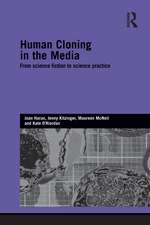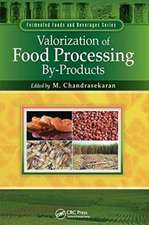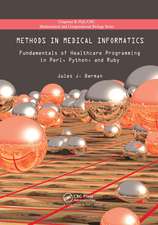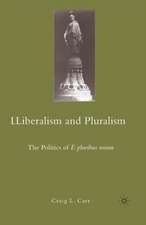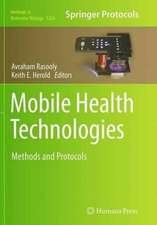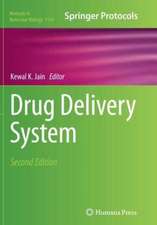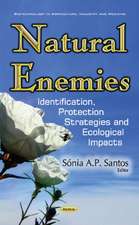Chemistry of the Textiles Industry
Editat de C. Carren Limba Engleză Paperback – 21 sep 2012
| Toate formatele și edițiile | Preț | Express |
|---|---|---|
| Paperback (1) | 1384.12 lei 6-8 săpt. | |
| SPRINGER NETHERLANDS – 21 sep 2012 | 1384.12 lei 6-8 săpt. | |
| Hardback (1) | 1227.21 lei 6-8 săpt. | |
| SPRINGER NETHERLANDS – 31 mai 1995 | 1227.21 lei 6-8 săpt. |
Preț: 1384.12 lei
Preț vechi: 1687.95 lei
-18% Nou
Puncte Express: 2076
Preț estimativ în valută:
264.89€ • 275.52$ • 218.68£
264.89€ • 275.52$ • 218.68£
Carte tipărită la comandă
Livrare economică 14-28 aprilie
Preluare comenzi: 021 569.72.76
Specificații
ISBN-13: 9789401042642
ISBN-10: 9401042640
Pagini: 380
Ilustrații: XIII, 361 p.
Dimensiuni: 155 x 235 x 20 mm
Greutate: 0.53 kg
Ediția:Softcover reprint of the original 1st ed. 1995
Editura: SPRINGER NETHERLANDS
Colecția Springer
Locul publicării:Dordrecht, Netherlands
ISBN-10: 9401042640
Pagini: 380
Ilustrații: XIII, 361 p.
Dimensiuni: 155 x 235 x 20 mm
Greutate: 0.53 kg
Ediția:Softcover reprint of the original 1st ed. 1995
Editura: SPRINGER NETHERLANDS
Colecția Springer
Locul publicării:Dordrecht, Netherlands
Public țintă
ResearchCuprins
1 Introduction: The structure of fibres.- 1.1 Introduction.- 1.2 Classification of textile fibres.- 1.3 The problem of fibre structure.- 1.4 Relationship of structure to tensile properties.- Acknowledgement.- References.- 2 The whitening of textiles.- 2.1 Introduction.- 2.2 Natural and synthetic fibers.- 2.3 Bleaching agents.- 2.4 Energy and the environment.- Survey of bleaching protocols.- References.- 3 Fire-retardant textiles.- 3.1 The problem.- 3.3 Developing a fire-retarding solution.- 3.4 Flammability of materials.- 3.5 Which materials are best?.- 3.6 The chemistry of fire-retardant finishing.- 3.7 Commercial solutions for fire retardancy.- 3.8 Premature failure of flame retardancy.- 3.9 The cost of fire-retardant solutions 123 References.- 4 Physical and chemical effects of domestic laundering processes.- 4.1 Introduction.- 4.2 Domestic laundry processes — Effects of water, mechanical action and tumble drying.- 4.3 Chemical effects of fabric washing product ingredients on textile fibres.- 4.4 Effects of wash process and product formulation variables on dyed fabrics.- Acknowledgement.- References.- 5 Easy care.- 5.1 Introduction.- 5.2 Urea—formaldehyde resins.- 5.3 Methylated urea—formaldehyde resins.- 5.4 Melamine resins.- 5.5 Mechanical finishing.- 5.6 The problem of fishy odour in resin-treated fabrics.- 5.7 Reactant-type products.- 5.8 Formulations for use of propylene urea—formaldehyde resin.- 5.9 Solids of resins.- Registered trademarks.- References.- 6 Machine-washable knitwear — Production routes.- 6.1 Introduction.- 6.2 Garment treatments.- 6.3 Yarn treatments.- 6.4 Continuous treatments.- 6.5 Environmental considerations.- 6.6 Conclusion.- Shrink-resist polymer comparisons.- References.- 7 Coated and laminated fabrics.- 7.1 Introduction.- 7.2Textile substrates.- 7.3 Techniques for coating fabrics.- 7.4 Chemistry of coating polymers.- 7.5 Natural and synthetic rubbers.- 7.6 Coating polymers and elastomers.- 7.7 Liquid proof/vapour permeable coated fabrics.- 7.8 Test methods for coated and laminated fabrics.- 7.9 End-use applications for rubber-coated fabrics.- 7.10 End-use applications for polymer-coated fabrics.- 7.11 Summary.- References.- 8 Scouring, enzymes and softeners.- 8.1 Introduction.- 8.2 Aqueous scouring processes.- 8.3 Enzymes.- 8.4 Softeners.- 8.5 Mercerisation.- References and bibliography.- 9 The colouring of textiles.- 9.1 The development of a scientific approach.- 9.2 The physical chemistry of coloration.- 9.3 Classes of colorants and their applications.- 9.4 Textile printing.- References.- General bibliography.- 10 The environmental impact of the textiles industry.- 10.1 Introduction.- 10.2 The environment.- 10.3 Environmental impacts of the textiles industry.- 10.4 Approaching the problem.- 10.5 Conclusion — the way forward.- References.



